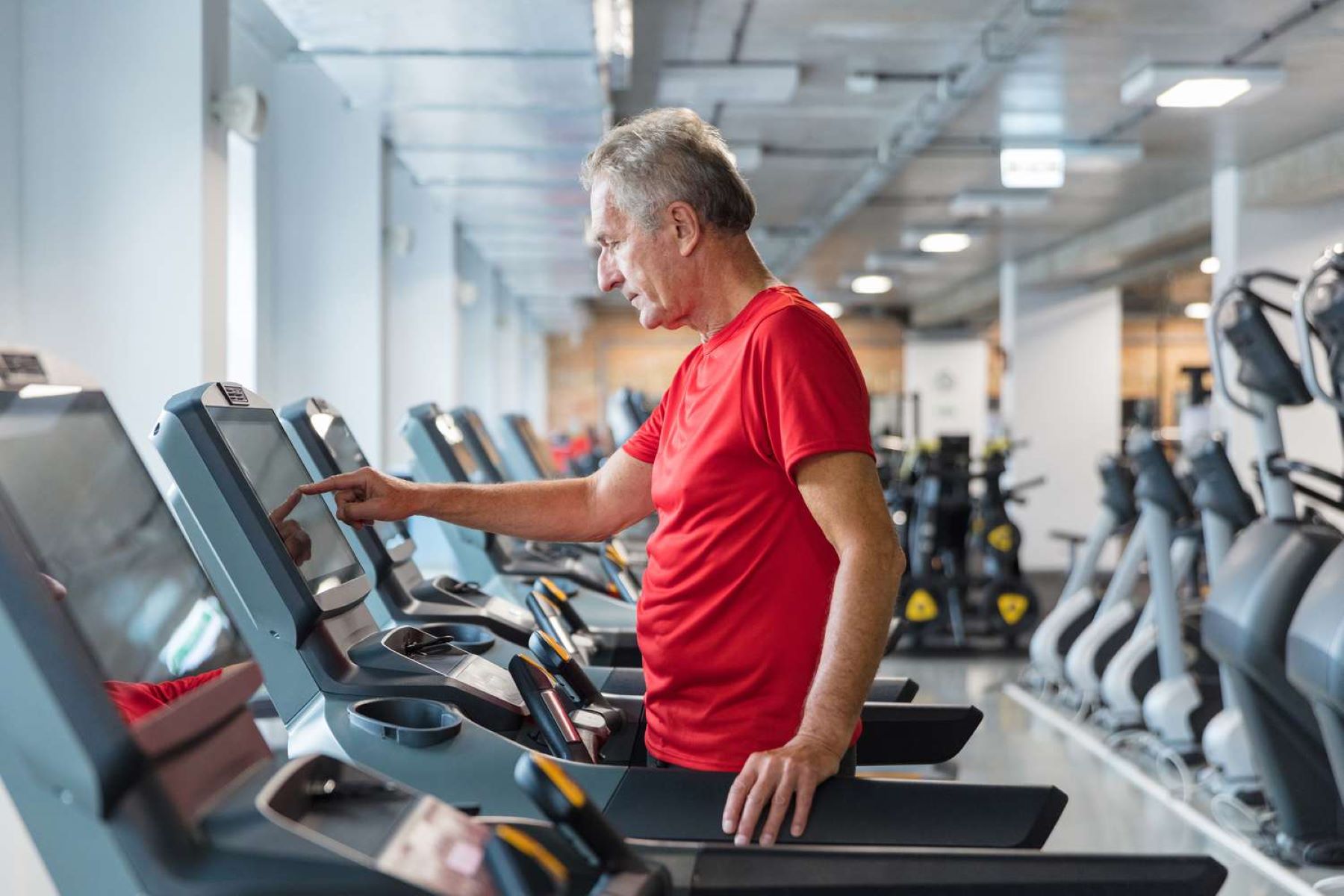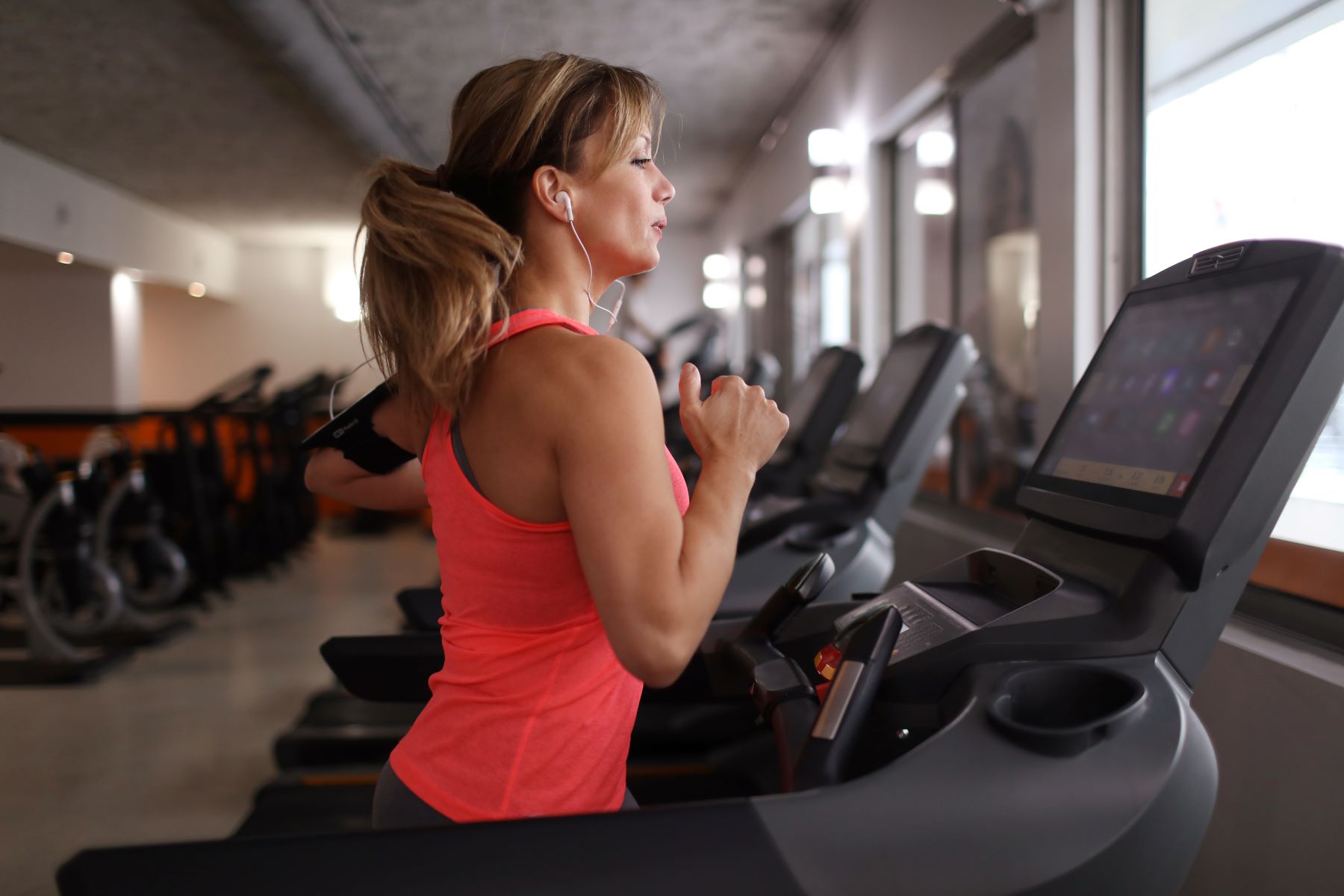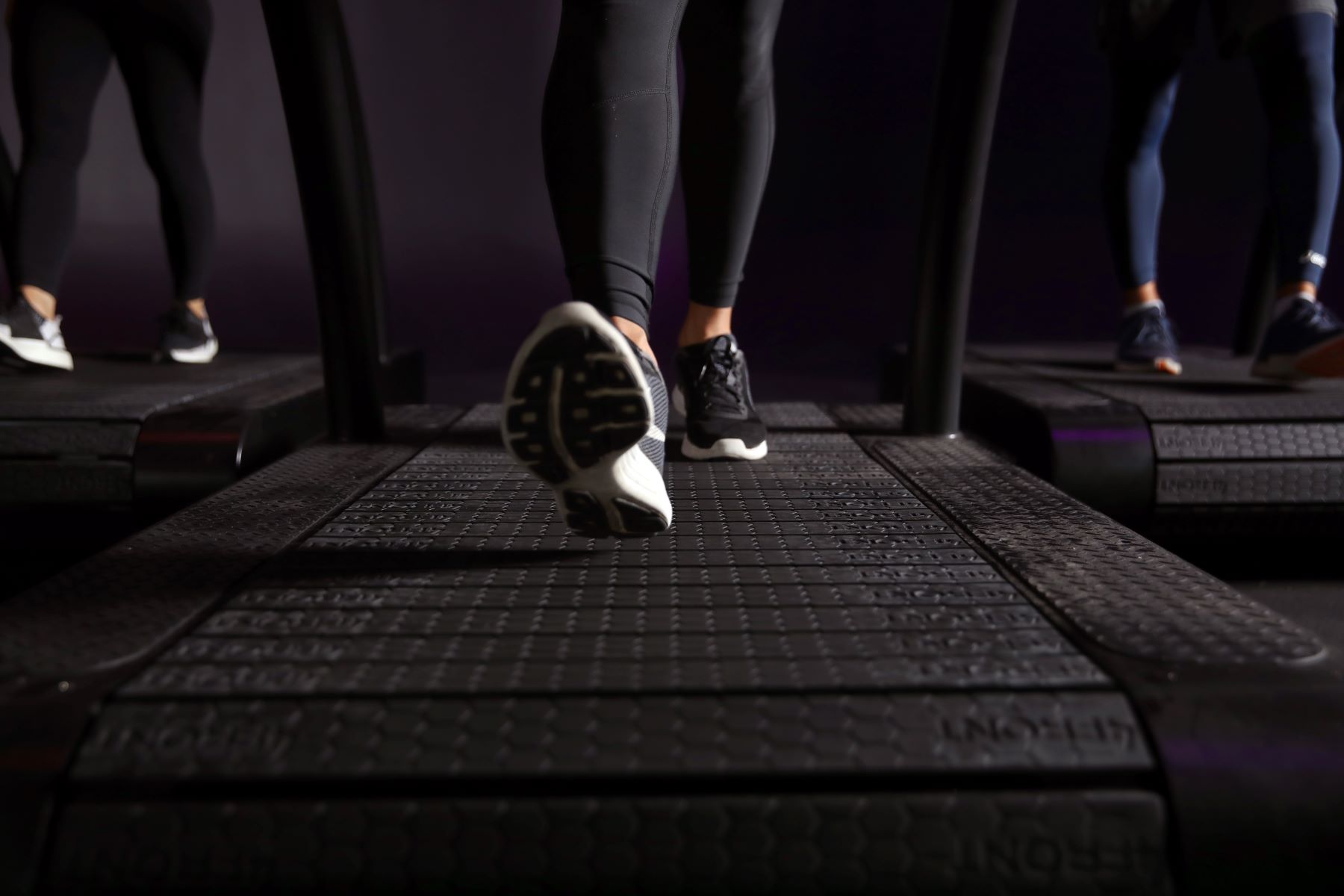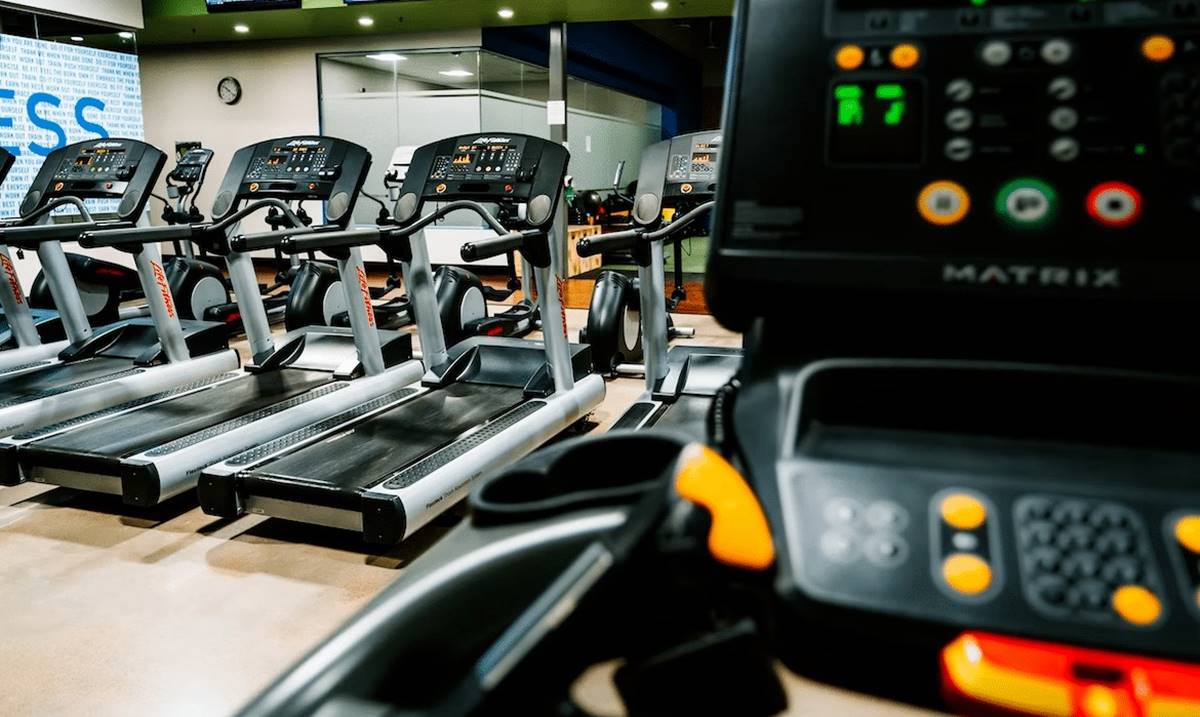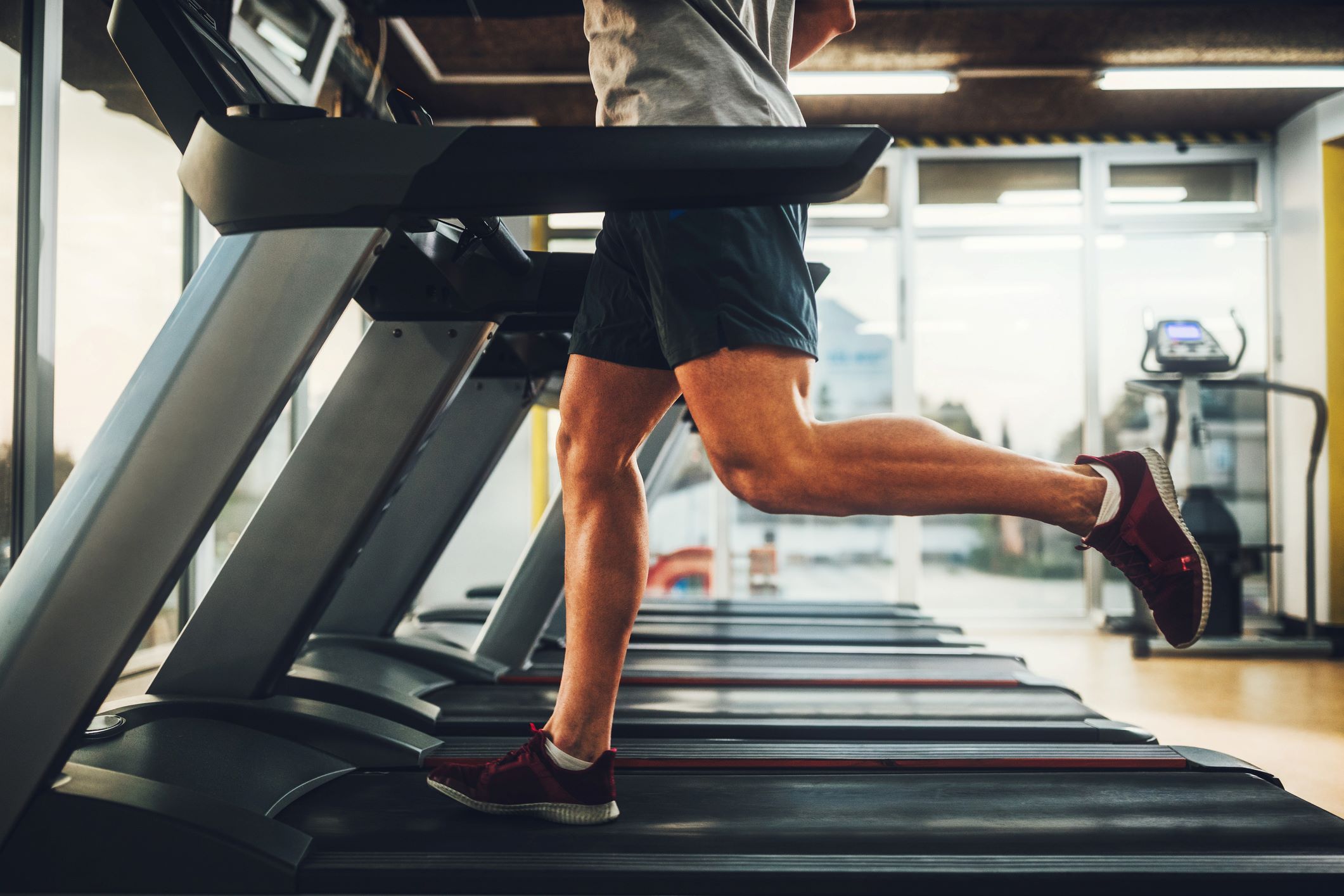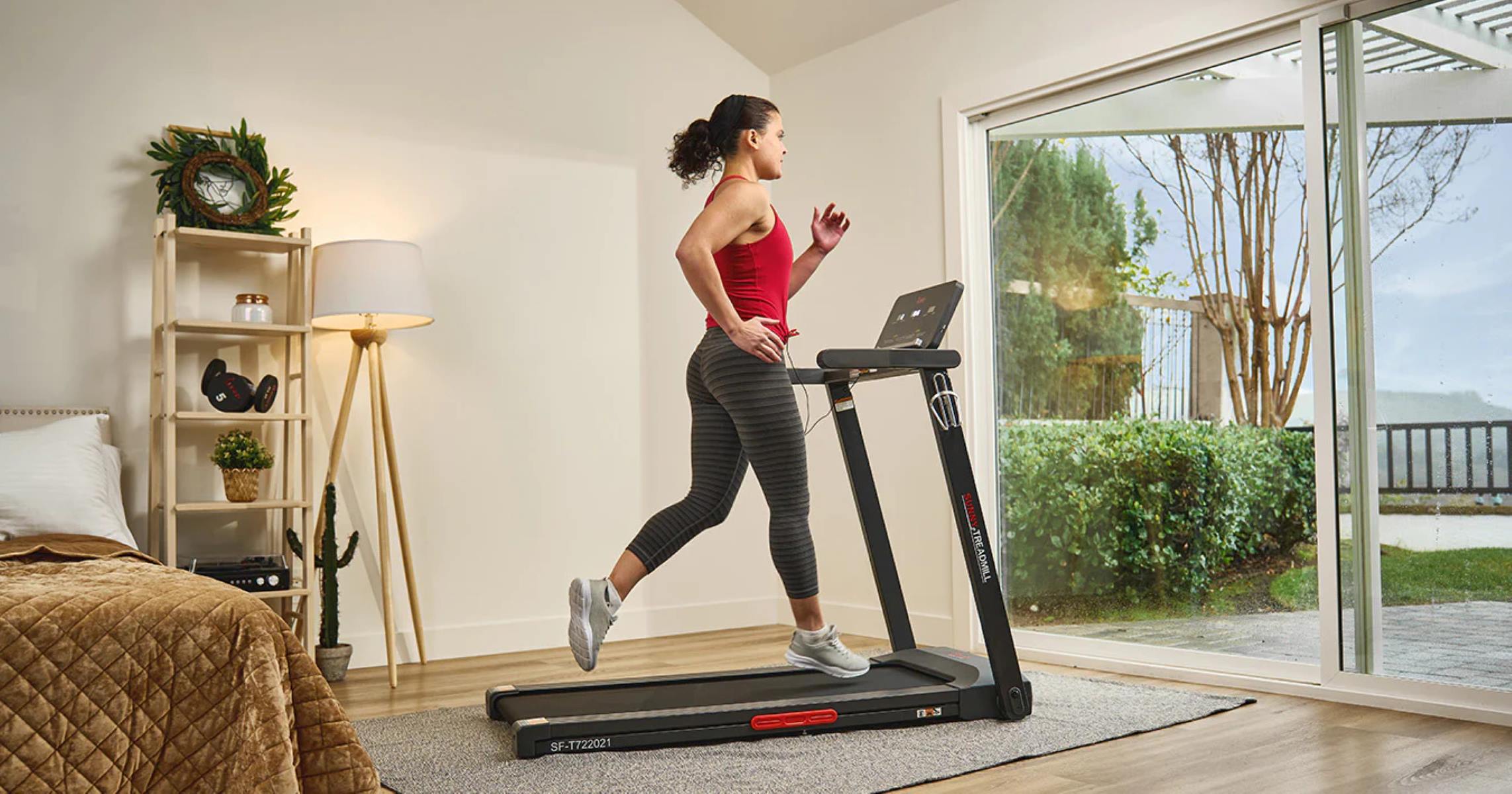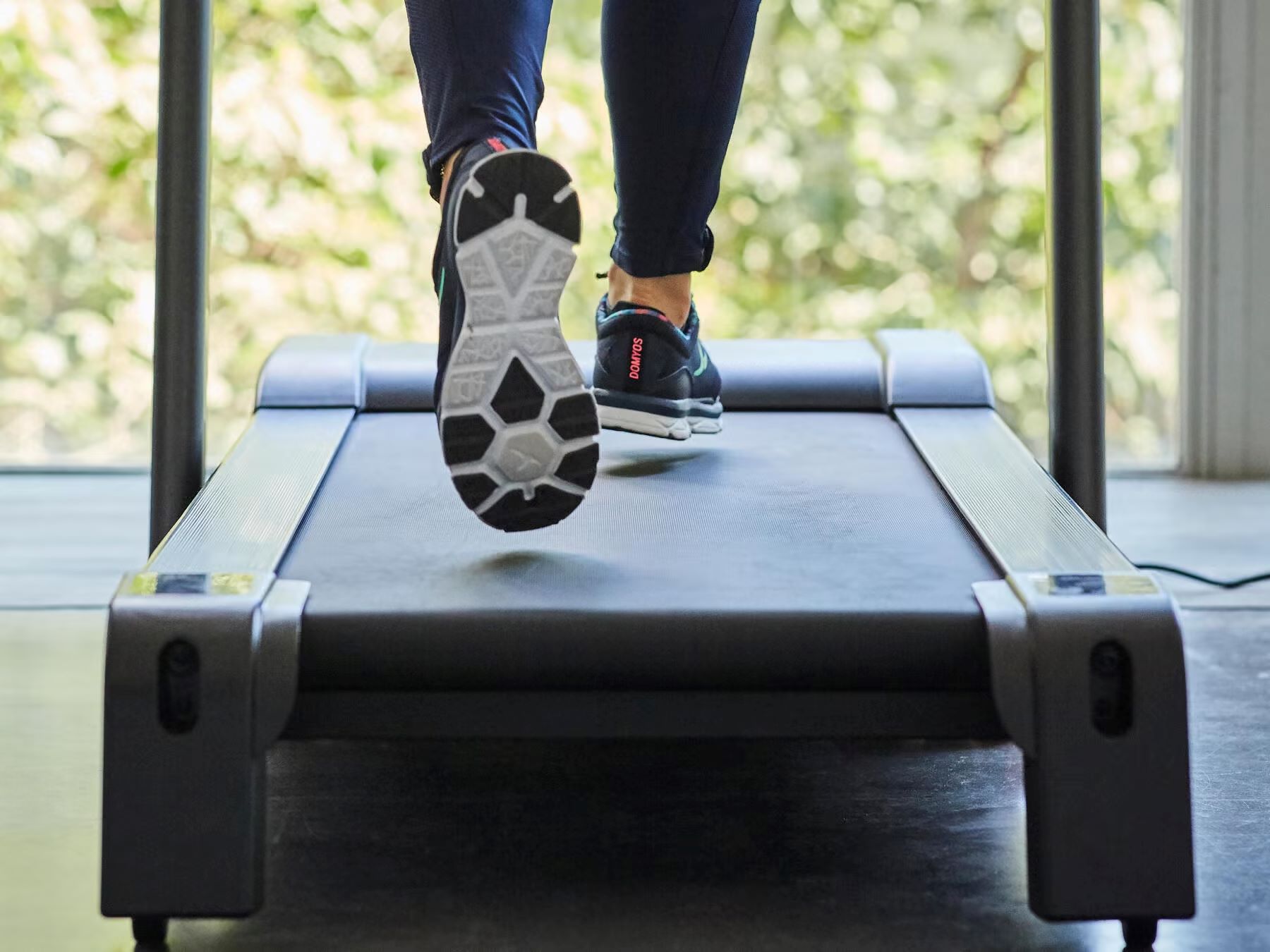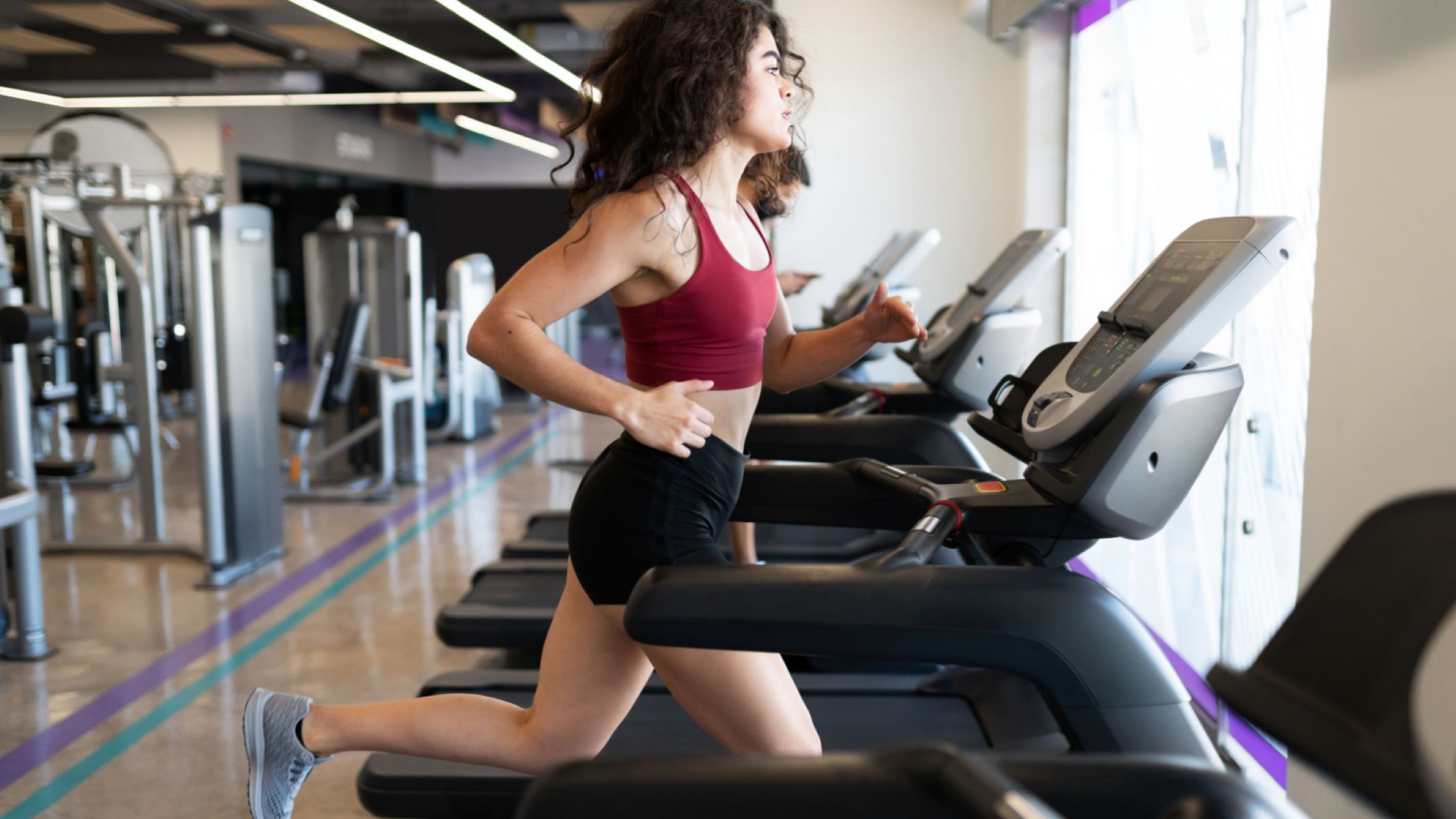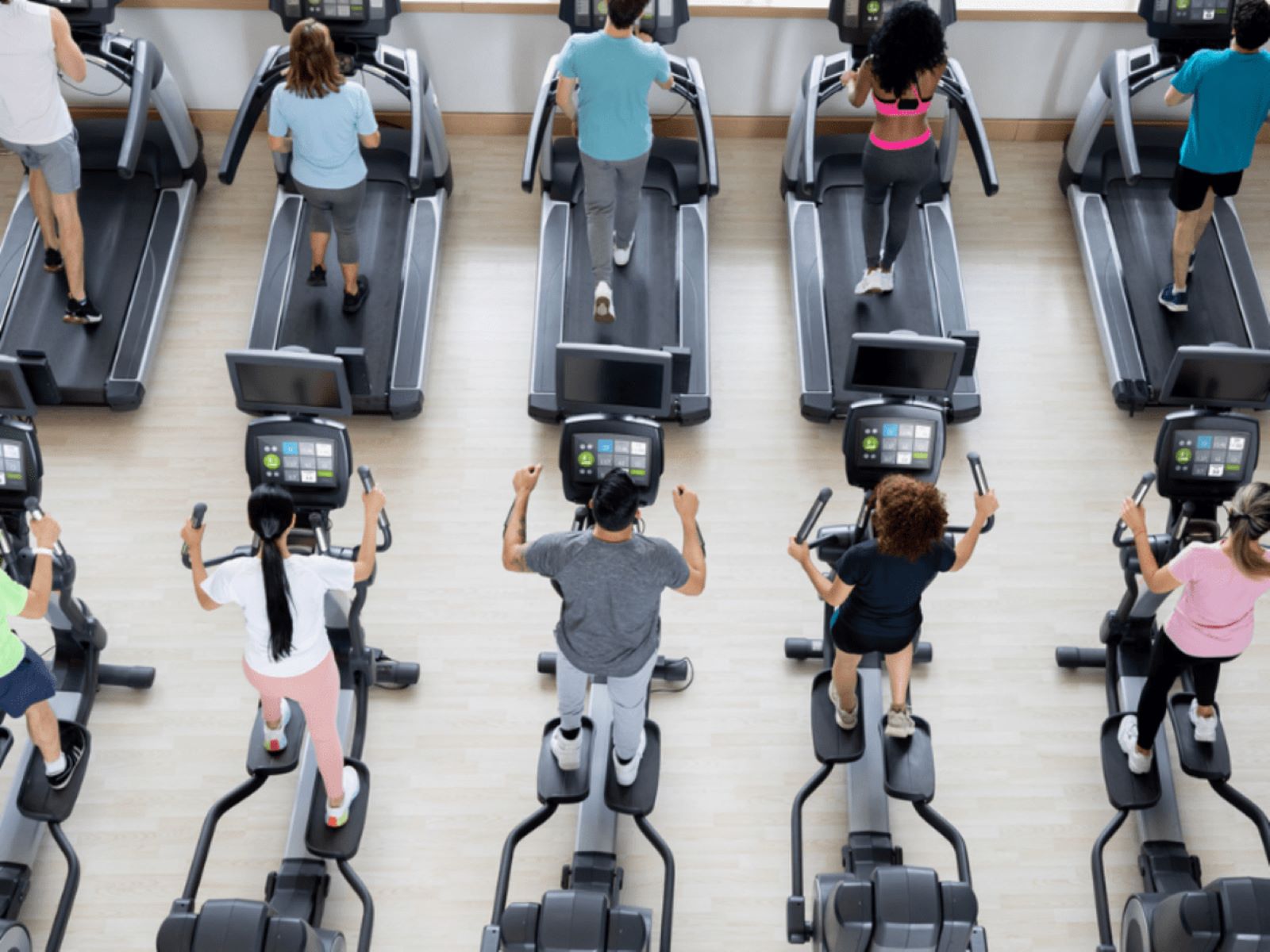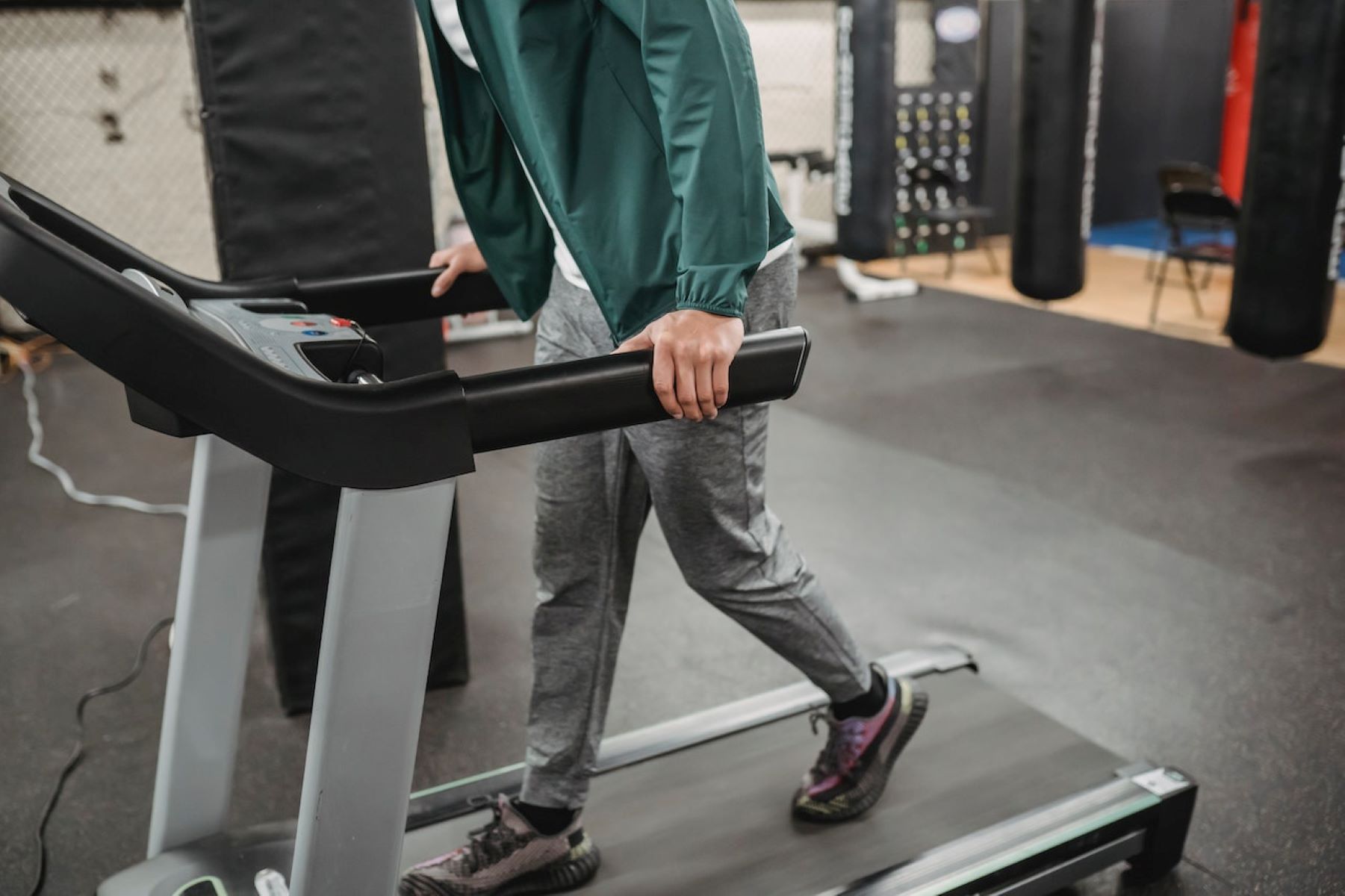

Featured
How Long Is A Mile On The Treadmill
Modified: January 2, 2024
Discover the featured article on how long a mile is on the treadmill. Find out the surprising facts and tips for maximizing your workout
Introduction
When it comes to fitness equipment, treadmills are a popular choice for many. They offer convenience and versatility, allowing users to engage in cardiovascular exercise without leaving the comfort of their homes or gyms. One common metric that people often track on the treadmill is the distance covered in a specific time frame, typically measured in miles. However, have you ever wondered how long a mile on the treadmill really is? In this article, we will delve into the factors that determine the length of a mile on a treadmill and how you can ensure accurate measurements.
Before we dive into the specifics, let’s first establish a basic understanding of how a treadmill operates. A treadmill is a stationary device with a moving surface that allows you to walk, jog, or run in place. It has various speed settings that determine how fast the surface moves beneath your feet. Additionally, some treadmills offer incline adjustments, allowing you to mimic the experience of uphill running or walking.
When it comes to measuring distance on a treadmill, the standard unit used is miles. However, it’s important to note that the distance displayed on the treadmill may not always be a direct representation of the actual distance covered.
Several factors can influence the accuracy of the distance measurement on a treadmill. These factors include the speed at which you’re running or walking, the incline setting, and even the calibration of the treadmill itself. Therefore, it’s crucial to understand how these factors interact to determine the length of a mile on the treadmill.
Understanding the Basics of a Treadmill
Before delving into the details of measuring the length of a mile on a treadmill, it’s essential to understand the basics of this popular fitness equipment. Treadmills consist of a wide belt that moves on a deck, allowing users to walk, jog, or run without actually moving forward in space.
One of the key features of a treadmill is its ability to adjust the speed at which the belt moves. Users can select their desired speed to match their fitness level and workout goals. The speed is typically measured in miles per hour (mph) or kilometers per hour (km/h).
Furthermore, many treadmills offer incline settings. This means that the deck can be adjusted to simulate an uphill or downhill terrain. The incline can be adjusted in either percentage or gradient, indicating the increase in elevation compared to a flat surface.
Understanding the functionality of a treadmill is essential because it directly affects the length of a mile on the machine. The speed setting determines how fast the belt moves, while the incline setting adds an extra challenge to your workout.
Most treadmills show the speed and incline settings on a digital display. This display often includes additional information, such as distance, time, and calories burned, to help you track and monitor your workout progress.
Standard Measurement of a Mile
In most countries, a mile is a unit of measurement widely used to determine distance. It is equivalent to 5,280 feet or approximately 1.609 kilometers. When it comes to treadmills, a standard mile is usually measured using these conventional measurements.
On a treadmill, the distance is typically displayed on the console or digital screen, showing the distance covered in miles. This measurement is based on the rotation of the belt and the number of times it completes a full revolution. The treadmill’s internal mechanism calculates the distance covered by multiplying the belt’s length by the number of revolutions made.
For example, if a treadmill belt has a length of 5 feet and it completes 1,056 revolutions, the distance covered would be one mile. However, it’s important to note that this calculation assumes that the treadmill is properly calibrated and the measurements are accurate.
Keep in mind that different treadmill models may have variations in the belt length and the way they calculate the distance covered. It’s always a good idea to consult the manufacturer’s guidelines or user manual to understand the specific measurement method used by your treadmill.
While a standard mile is the commonly accepted unit of measurement, treadmills often provide options for users to switch between miles and kilometers. This is particularly useful for individuals who prefer to use the metric system or those who want to challenge themselves with different distance increments.
Understanding the standard measurement of a mile on a treadmill is crucial for accurately tracking your distance and progress during your workouts. It allows you to set specific goals and see how far you have come in your fitness journey.
Factors Affecting Mileage on a Treadmill
Several factors can influence the mileage or distance covered on a treadmill. Understanding these factors is essential to ensure accurate measurements and to make the most out of your workout.
1. Speed Setting: The speed setting on a treadmill directly impacts the distance covered. The faster the belt moves, the more ground you will cover in a given time frame. If you want to increase your mileage, you can gradually increase the speed setting to challenge yourself and push your limits.
2. Incline Setting: The incline setting on a treadmill plays a significant role in the distance covered. When the incline is increased, it adds an upward angle to the running surface, mimicking the challenge of running uphill. This requires more effort and can increase the distance covered even at the same speed. By adjusting the incline, you can target different muscle groups and add variety to your workout routine.
3.
4. Body Weight and Composition: Your body weight and composition can affect the mileage on a treadmill. Generally, individuals with higher body weight burn more calories and cover more distance due to the increased effort required to move their bodies. However, it’s important to focus on overall fitness and health rather than solely focusing on distance covered.
5. Efficiency and Running Technique: A person’s running efficiency and technique can impact the mileage on a treadmill. Efficient running form helps to maximize energy transfer and minimize energy wastage, allowing you to cover more distance with less exertion. Working on your running technique and incorporating proper form can improve your efficiency and help you achieve greater mileage.
By understanding these factors, you can effectively optimize your treadmill workouts and track your progress accurately. Keep in mind that while increasing mileage is a common goal, it’s important to listen to your body, set realistic targets, and prioritize overall fitness and well-being.
How Speed and Incline Impact Distance Covered
The speed and incline settings on a treadmill have a significant impact on the distance covered during your workout. Let’s take a closer look at how these factors affect the distance you can cover on a treadmill.
Speed: The speed setting determines how fast the treadmill belt moves. As you increase the speed, the belt moves faster, allowing you to cover more ground in a given time frame. If you run or walk at a constant speed, increasing the speed setting will naturally increase the distance covered. For example, by increasing your running speed from 5 mph to 6 mph, you will cover one mile in a shorter amount of time.
Incline: The incline setting on a treadmill adjusts the angle of the running surface. Running or walking on an incline simulates the challenge of uphill terrain, requiring more effort and energy expenditure. As the incline increases, the distance covered also increases, even if you maintain the same speed. Running on an incline engages different muscle groups, such as the glutes and calves, and can help improve cardiovascular fitness. By incorporating incline workouts into your routine, you can challenge yourself and increase your overall endurance.
Combining speed and incline settings can have a significant impact on the distance you cover during your treadmill workouts. For instance, running at a higher speed with a lowered incline will allow you to cover more ground in a shorter period of time. On the other hand, running at a slower speed with a higher incline will result in a lower overall distance covered but with increased intensity and calorie burn.
Therefore, it’s crucial to find the right balance between speed and incline settings based on your fitness goals and capabilities. Experimenting with different combinations can help you discover what works best for your body and allows you to achieve optimal results.
Keep in mind that it’s essential to gradually increase both speed and incline to avoid overexertion and potential injury. Listen to your body, maintain proper form, and consider consulting with a fitness professional to design a treadmill workout plan that aligns with your goals and abilities.
The Importance of Calibration
Calibration plays a vital role in ensuring accurate distance measurement on a treadmill. Calibration refers to the process of calibrating or adjusting the settings of the treadmill to align with accurate measurements.
When a treadmill is properly calibrated, it should accurately measure the distance covered based on factors like belt speed and revolutions. However, over time and with extensive use, treadmills can become slightly misaligned or lose calibration. This can lead to inaccurate distance measurements, impacting the overall accuracy of your workouts.
Calibrating your treadmill is crucial for several reasons:
Accurate Distance Tracking: Having an accurately calibrated treadmill ensures that the distance displayed on the console is a true representation of the distance covered. This is important for tracking your progress, setting goals, and staying motivated.
Effective Workout Planning: Calibration allows you to accurately plan and track your workout sessions. If the treadmill is not properly calibrated, you might unknowingly overestimate or underestimate the distance covered. This can impact your training progress and hinder your ability to reach your fitness goals.
Safety: Accurate calibration ensures safety during your treadmill workouts. If there is a significant discrepancy between the displayed distance and the actual distance covered, it can lead to improper pacing or excessive strain on your body. This can increase the risk of injury or result in an inefficient workout.
Most treadmills have built-in calibration features or guidelines in the user manual to help you calibrate the machine. The calibration process typically involves adjusting the belt tension, aligning the roller bearings, or utilizing specific calibration programs provided by the manufacturer.
It is recommended to calibrate your treadmill periodically, especially if you notice discrepancies in the displayed distance or if you have recently moved or serviced your treadmill. By following the manufacturer’s guidelines and regularly calibrating your treadmill, you can ensure accurate distance measurements and optimize your workout experience.
Alternative Measurements for Treadmill Distance
While the standard measurement for treadmill distance is typically miles, there are alternative ways to measure and track your treadmill workouts. These alternative measurements can provide additional insights and variety to your fitness routine. Let’s explore a few options:
Kilometers: In many parts of the world, kilometers are the preferred unit of measurement for distance. Most treadmills offer the option to switch between miles and kilometers. If you prefer using the metric system or want to challenge yourself with different distance increments, you can switch to kilometers on the treadmill’s console.
Laps: Laps refer to the number of times you complete a full circuit around the track or the belt on the treadmill. Instead of focusing on distance, you can count the number of laps completed during your workout. This is a simple and effective way to track your progress. However, keep in mind that the length of the track or belt may vary between treadmills, so it’s important to know the lap distance specific to your machine.
Time: Rather than focusing on distance, you can track your workouts based on time spent on the treadmill. Set a specific duration for your workouts and aim to gradually increase the time as your fitness level improves. This allows you to focus on endurance and build cardiovascular strength without being confined to distance measurements.
Climb Equivalent: Some treadmills offer a feature that converts the incline level to a climb equivalent. This feature estimates the equivalent distance you would traverse if you were climbing outdoors. It adds an element of realism to your workout and helps you visualize your progress in a more relatable way.
These alternative measurements can serve as motivational tools and provide a fresh perspective on your treadmill workouts. It’s important to choose the measurement that aligns with your goals and preferences. Whether you opt for traditional miles, kilometers, laps, time, or climb equivalents, the key is consistency and tracking your progress over time.
Remember, the most important aspect of using any measurement is that it helps you stay motivated, stay on track, and continue on your fitness journey.
Conclusion
Understanding the metrics and factors that determine the length of a mile on the treadmill is essential for accurate distance tracking and effective workout planning. Speed and incline settings play a significant role in the distance covered, while calibration ensures accurate measurements for progress tracking and safety.
While miles are the standard measurement for treadmill distance, alternative measurements such as kilometers, laps, time, or climb equivalents provide additional options to diversify your workouts and track progress from different perspectives.
Regardless of the measurement used, it’s crucial to listen to your body, set realistic goals, and prioritize overall fitness and well-being. Running or walking on a treadmill offers convenience and flexibility, allowing you to engage in cardiovascular exercise anytime, anywhere. It’s important to find a balance between pushing your limits and avoiding overexertion or injury.
Remember to consult the user manual or manufacturer guidelines for proper calibration procedures and follow them periodically to ensure accurate measurements.
Whether you’re aiming to increase your mileage, improve endurance, or simply maintain a healthy lifestyle, the treadmill can be a valuable tool in achieving these goals. Tracking your distance and progress can provide motivation and a sense of accomplishment as you work towards your fitness targets.
So step onto the treadmill, set your desired speed and incline, and embark on a challenging yet rewarding journey towards improved fitness. With the right knowledge and understanding, you can make the most out of your treadmill workouts and enjoy the benefits of regular exercise.
